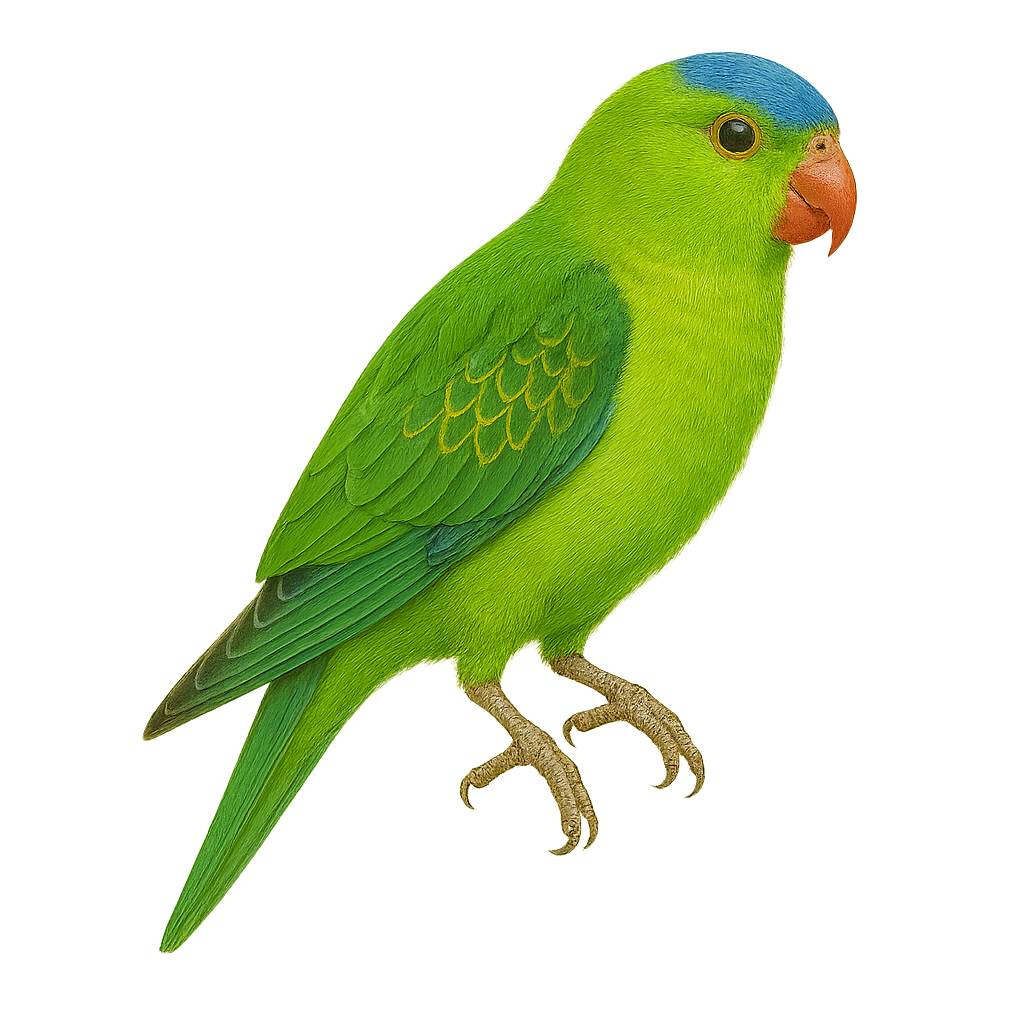Your wildlife photography guide.
Explore the blue-naped parrot in detail, study its behavior, prepare your shots.
Where to observe and photograph the blue-naped parrot in the wild
Learn where and when to spot the blue-naped parrot in the wild, how to identify the species based on distinctive features, and what natural environments it inhabits. The WildlifePhotographer app offers tailored photography tips that reflect the blue-naped parrot’s behavior, helping you capture better wildlife images. Explore the full species profile for key information including description, habitat, active periods, and approach techniques.
Blue-naped Parrot
Scientific name: Tanygnathus lucionensis

IUCN Status: Near Threatened
Family: PSITTACIDAE
Group: Birds
Sensitivity to human approach: Suspicious
Minimum approach distance: 10 m
Courtship display: February to March
Incubation: 26-28 jours
Hatchings: February to April
Habitat:
Tropical forests, agricultural areas, mangroves
Activity period :
Primarily active during the day, with peak activity in the morning and late afternoon.
Identification and description:
The Blue-naped Parrot, or Tanygnathus lucionensis, is a colorful and fascinating bird native to the tropical forests of the Philippines. It is distinguished by its bright green plumage, characteristic blue nape, and robust beak. Measuring about 31 cm in length, it has a wingspan that allows it to move easily through the canopy. This parrot is often observed in small groups, emitting sharp calls. It primarily feeds on fruits, seeds, and flowers, playing a crucial role in seed dispersal. Although its natural habitat is threatened by deforestation, it sometimes adapts to agricultural areas. However, its population is declining, making it a conservation concern.
Recommended lens:
400 mm – adjust based on distance, desired framing (portrait or habitat), and approach conditions.
Photography tips:
To photograph the Blue-naped Parrot, prioritize early morning hours when the light is soft and bird activity is at its peak. Use a telephoto lens of at least 400mm to capture precise details without disturbing the bird. Be patient and discreet, blending into the environment to avoid scaring it away. A tripod can be useful to stabilize your camera, especially in the shaded areas of tropical forests. Remember to check your camera settings to adjust shutter speed and aperture according to changing light conditions.
The WildlifePhotographer App is coming soon!
Be the first to explore the best nature spots, track rutting seasons, log your observations, and observe more wildlife.
Already 1 431 wildlife lovers subscribed worldwide

